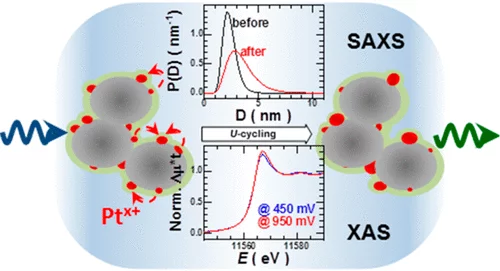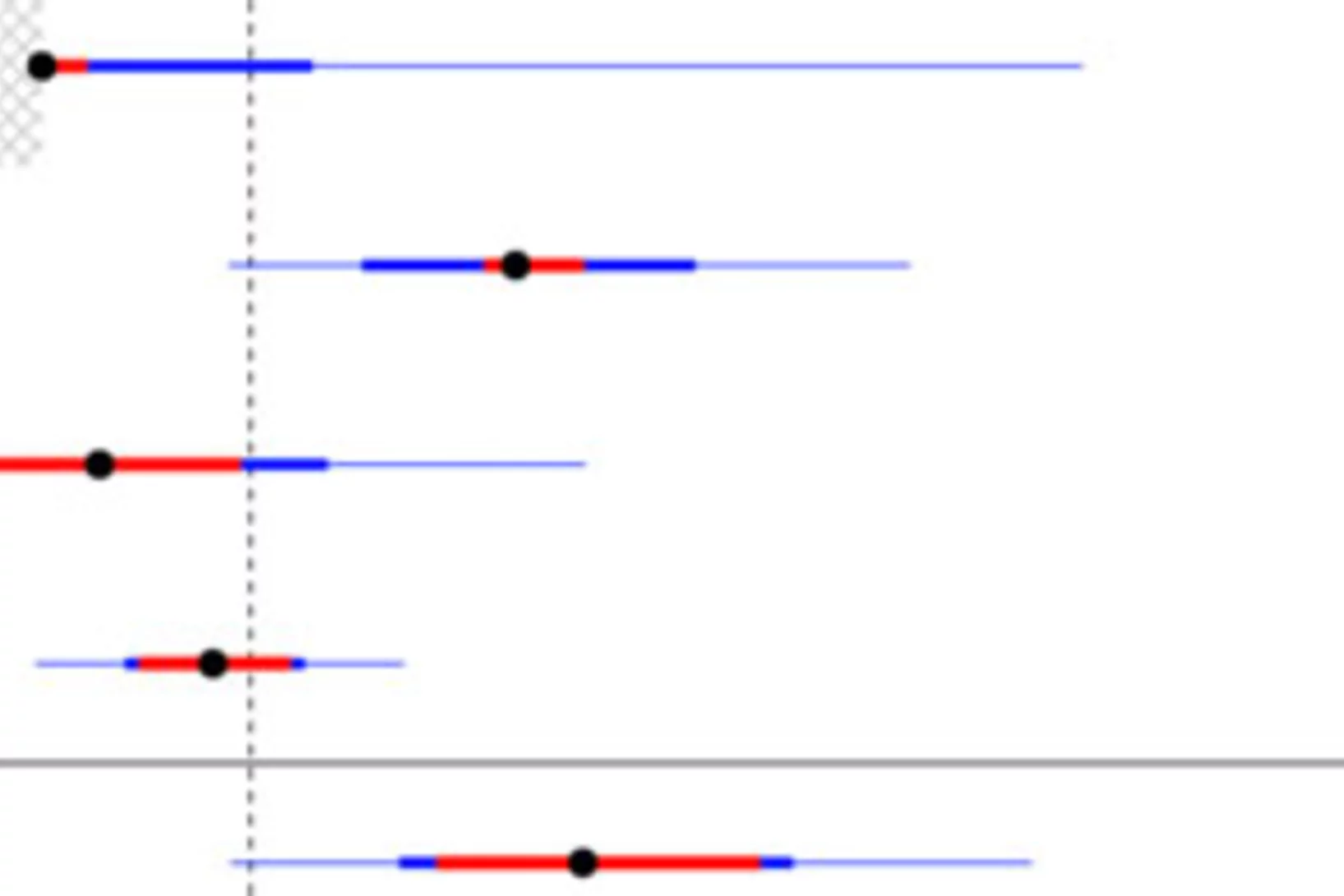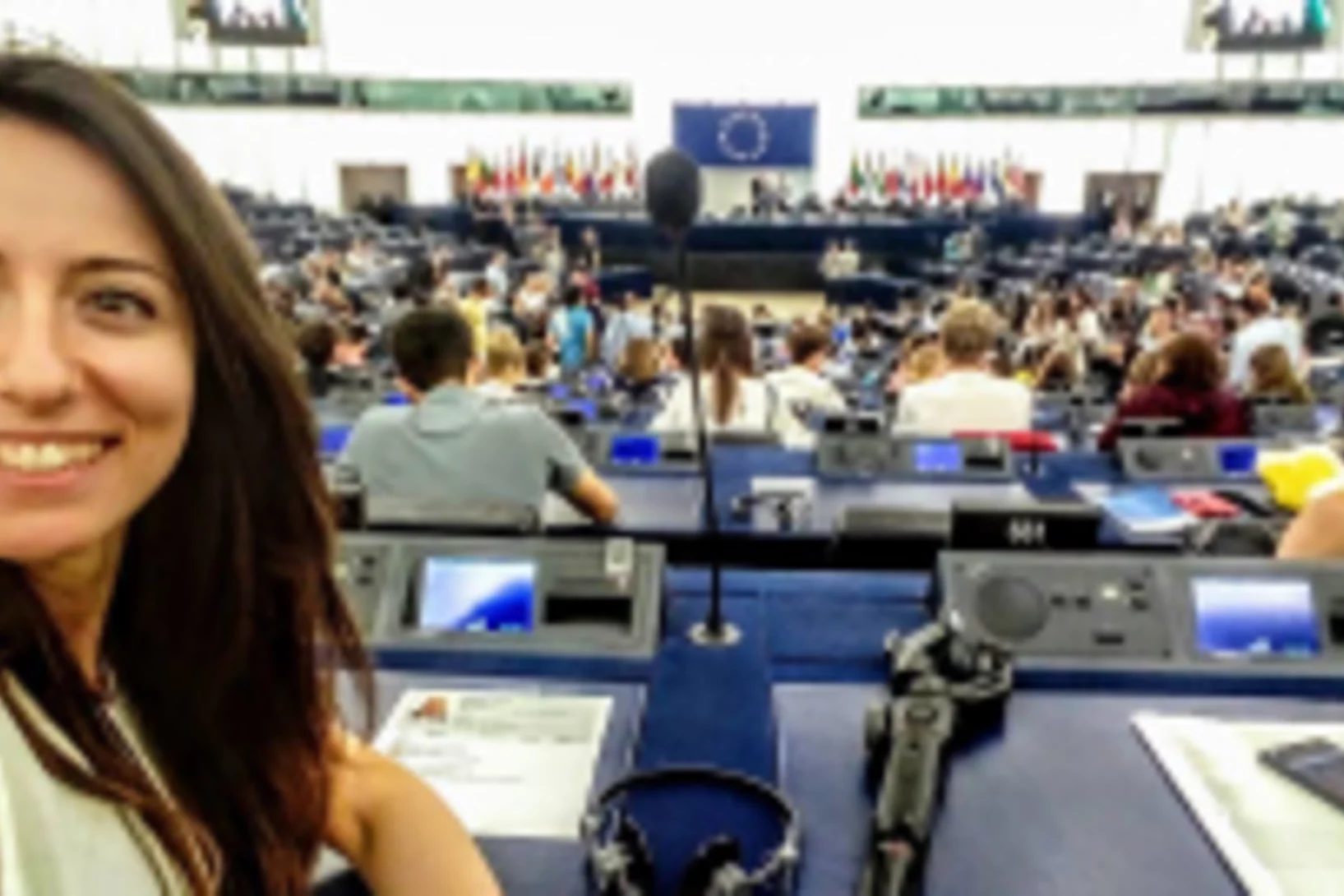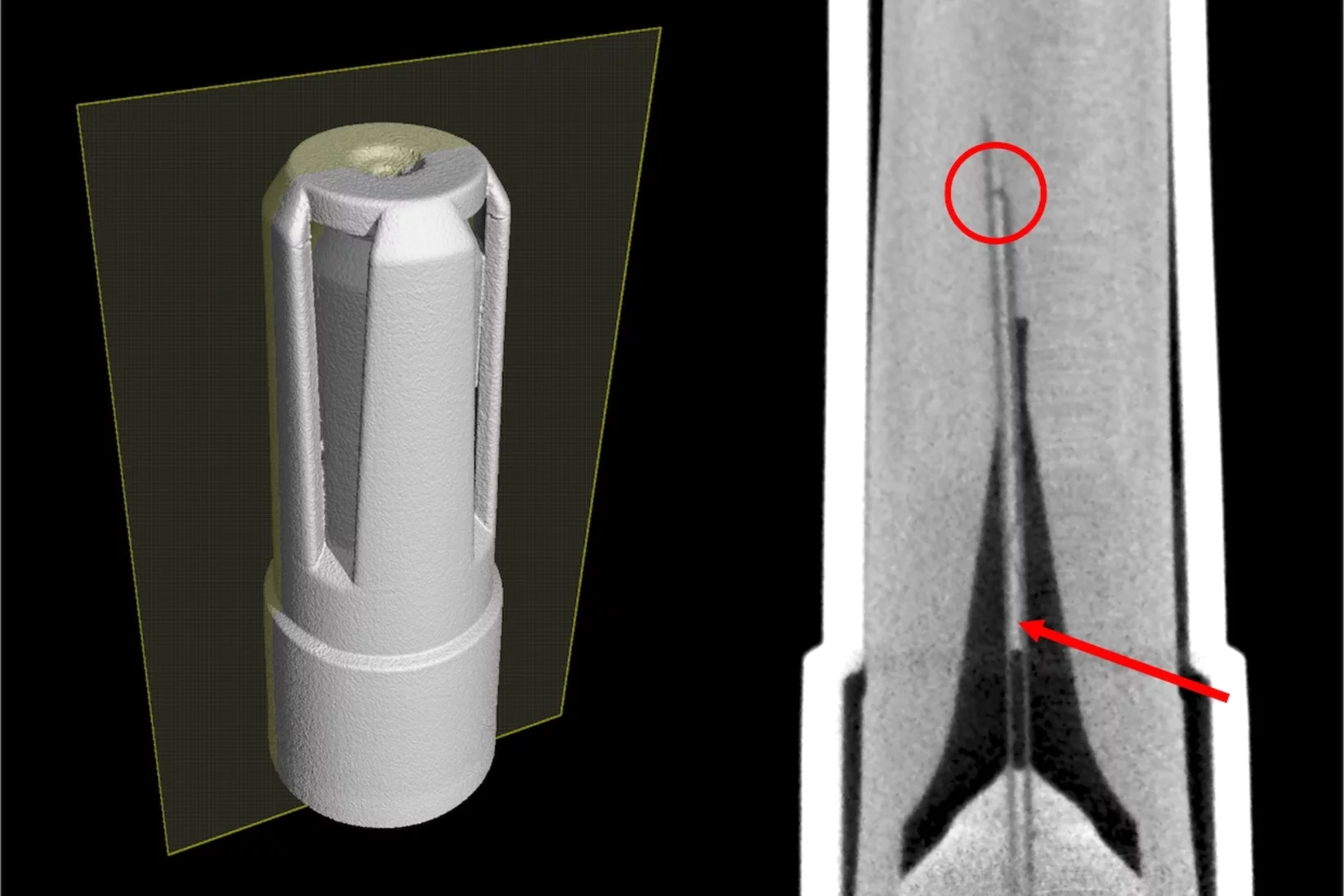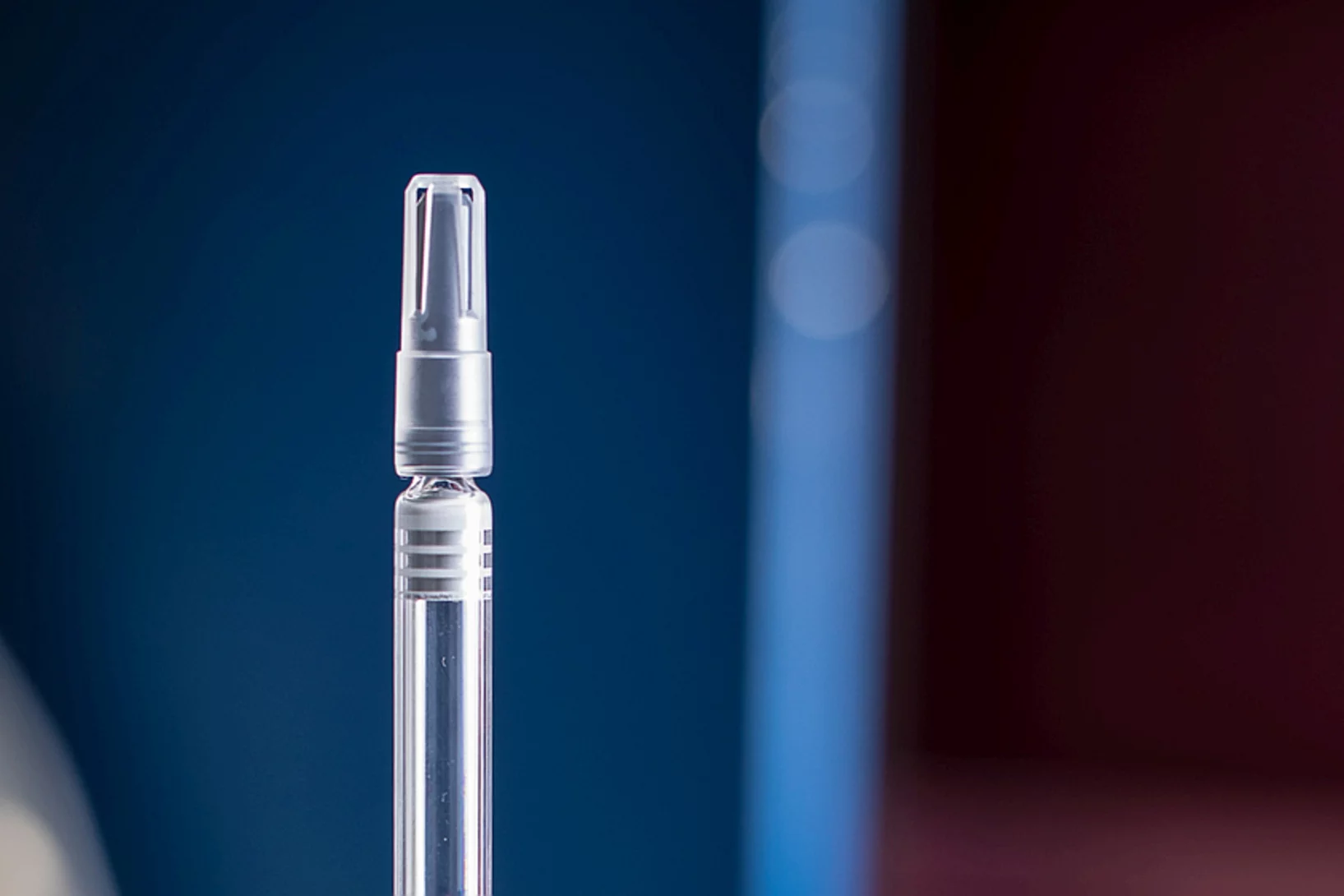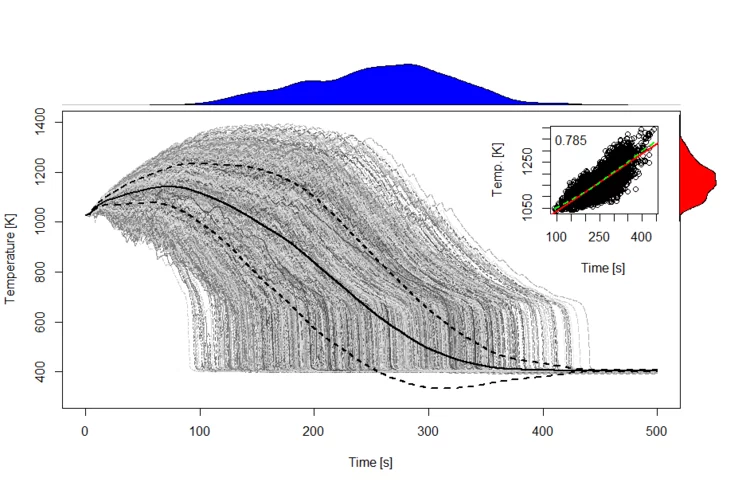Am PSI widmen sich mehrere Projekte wichtigen Forschungsfragen rund um das Coronavirus Sars-CoV-2 und den daraus resultierenden Erkrankungen. Wir informieren über Aktivitäten und Vorhaben, zum Beispiel zu Untersuchungen von Lungengewebe, zur Produktion von Proteinen und Antikörpern oder über Ideen für neue Forschung zu Covid-19.
Nützliche Links
Regisseure mit Zusatzaufgaben
Datenspeicher aus neuartigen Materialien sollen ermöglichen, Informationen auf kleinerem Raum viel schneller und energiesparender als bisher aufzuzeichnen. Filmaufnahmen mit dem Röntgenlaser zeigen, was im Inneren möglicher neuer Speichermedien passiert und wie sich die Prozesse, bei denen das Material zwischen zwei Zuständen wechselt, optimieren lassen.
MOOCs – a paradigm shift in education
In March 2018, the nine-week MOOC “Introduction to synchrotrons and x-ray free-electron lasers” (abbreviated to “SYNCHROTRONx”) came online via the edX provider of the École Polytechnique Fédérale de Lausanne (EPFL), created by Phil Willmott of the Swiss Light Source, Paul Scherrer Institute. “MOOC” is an acronym for “massive open online course”, a teaching platform started in the first decade of this century, which has become increasingly popular in the last five to six years. MOOCs have no limits to participation and are free. Some of the most popular MOOCs can attract many tens of thousands of participants. Even the most specialized subjects may have an initial enrollment of over a thousand, more than an order of magnitude larger than that typically found in traditional higher education. There were over 70 million MOOC enrollments covering nearly 10’000 subjects offered by the top five providers in 2017 alone!
Combining SAXS and XAS To Study the Operando Degradation of Carbon-Supported Pt-Nanoparticle Fuel Cell Catalysts
In the last two decades, small-angle X-ray scattering (SAXS) and X-ray absorption spectroscopy (XAS) have evolved into two well-established techniques capable of providing complementary and operando information about a sample’s morphology and composition, respectively. Considering that operation conditions can often lead to simultaneous and related changes in a catalyst’s speciation and shape, herein we introduce a setup that combines SAXS and XAS in a configuration that allows optimum acquisition and corresponding data quality for both techniques.
Dr. Anne Bonnin gives an invited talk at SRI 2018
The 13th International Conference on Synchrotron Radiation Instrumentation (SRI 2018) was hosted by the National Synchrotron Radiation Research Center (NSRRC) from June 10 to 15, 2018. The 5-day conference was gathering scientists and engineers around the world involved in development of new concepts, techniques, and instruments related to synchrotron radiation and free electron laser research.
Observation of Anomalous Meissner Screening in Cu/Nb and Cu/Nb/Co Thin Films
We have observed the spatial distribution of magnetic flux in Nb, Cu/Nb, and Cu/Nb/Co thin films using muon-spin rotation. In an isolated 50-nm-thick Nb film, we find a weak flux expulsion (Meissner effect) which becomes significantly enhanced when adding an adjacent 40 nm layer of Cu. The added Cu layer exhibits a Meissner effect (due to induced superconducting pairs) and is at least as effective as the Nb to expel flux.
Biologischer Lichtsensor in Aktion gefilmt
Mithilfe eines Röntgenlasers hat ein Team unter Leitung von Forschenden des Paul Scherrer Instituts PSI einen der schnellsten Prozesse in der Biologie aufgezeichnet. Der dabei erzeugte molekulare Film enthüllt, wie der Lichtsensor Retinal in einem Proteinmolekül aktiviert wird. Solche Reaktionen kommen in zahlreichen Organismen vor. Der Film zeigt erstmals, wie ein Protein die Reaktion des eingebetteten Lichtsensors effizient steuert.
Revisiting the magnetic structure of La1/3Sr2/3FeO3 by neutron powder diffraction and Mössbauer spectroscopy
La1/3Sr2/3FeO3 is reported to show a 2Fe4+ → Fe3+ + Fe5+ charge disproportionation (CD) accompanied by Fe3+/Fe5+ charge ordering (CO) and a metal-insulator (MI) transition at 200 K [1]. The MI transition was ascribed to CD and CO. Based on the CO, the magnetic structure was reported to be P-3m1 or P1 from the neutron diffraction studies performed at 50 K and 15 K, respectively [2]. The former seems not to be a correct solution since the presence of rotoinversion -3 is incompatible with the claimed collinear magnetic structure, with the collinear moments in the ab-plane in R-3c metric; and the latter might be a correct solution, but without any symmetry restrictions in space group P1.
Breakdown of Magnetic Order in the Pressurized Kitaev Iridate β-Li2IrO3
Temperature-pressure phase diagram of the Kitaev hyperhoneycomb iridate β-Li2IrO3 is explored using magnetization, thermal expansion, magnetostriction, and muon spin rotation measurements, as well as single-crystal x-ray diffraction under pressure and ab initio calculations.
Huangshan Chen successfully defends his thesis on the development of the MuTRiG ASIC for the Mu3e timing detecors
Huangshan Chen was instrumental in the development of the MuTRiG ASIC, which performs the time-to-digital conversion for the Mu3e fibre and tile timing detectors. He has now successfully defended his thesis at Heidelberg University.
Rhine-Knee Regiomeeting 2018
Since it was first established in 1987, the annual Regio-Meeting has been instrumental in facilitating interactions in the structural biology community in southwestern Germany, the eastern region of France and an expanding area of Switzerland. It is set as an informal event to foster young scientists to discuss their research results in an international context. The 2018 edition will take place in the heart of Switzerland in Emmetten from September 26 to 28, 2018. Registration and abstract submission deadline: September 7, 2018.
Nuclear data for nuclear installations: Radiochemistry improves the precision of the cross-section data of long-lived radionuclides
Knowledge about the cross sections data of the target materials used for spallation neutron facilities (SNF) and accelerator driven systems (ADS) is essential for the licensing, safe operation and decommissioning of these facilities. In addition, these data are important to evaluate and improve the existing computer simulation codes. Especially the α-emitter 148Gd has a large contribution to radio-toxicity of spallation target facilities with its 74.6 years of half-life.
Observation of ttH Production
The observation of Higgs boson production in association with a top quark-antiquark pair is reported, based on a combined analysis of proton-proton collision data at center-of-mass energies of √s = 7,8, and 13 TeV, corresponding to integrated luminosities of up to 5.1, 19.7, and 35.9 fb-1, respectively. The data were collected with the CMS detector at the CERN LHC.
Rosaria Pileci was one out of four scientific speakers at EYE2018
Rosaria Pileci, a PhD student at the LAC, presented aerosol research at the European Parliament's European Youth Event (EYE2018).
Tracking down radicals in methane oxybromination
Catalytic oxybromination may turn the cheap and abundant feedstock methane into the platform compounds bromomethane and dibromomethane. Yet researchers have been puzzled by the catalysis mechanism, which was speculated to involve free radical intermediates. Operando photoelectron photoion coincidence helped distinguish surface and gas-phase reaction steps and elucidated the crucial halogen-mediated C–H bond activation step, which is driven by elusive bromine and methyl radicals.
Clogging in staked-in needle pre-filled syringes (SIN-PFS): Influence of water vapor transmission through the needle shield
Staked-in needle pre-fillable syringes (SIN-PFS) are a convenient delivery system widely established in the growing pharmaceutical market. Under specific storage conditions, the needle of PFS containing high concentration drug product (DP) solution is prone to clogging, which prevents administration of the liquid.
Hollywood im Würenlinger Wald
Mit dem Röntgenlaser SwissFEL wollen Forschende am PSI Filme von Biomolekülen in Aktion produzieren. So lässt sich aufzeigen, wie unser Auge funktioniert oder wie neue Medikamente wirken.
Revealing a Living-Dead Magnetic Layer
A peculiar magnetic “dead layer” is detected at the surface of thin films of DyTiO3, a ferrimagnetic Mott insulator. Depth dependent X-ray absorption measurements performed at the X-Treme beamline in the Swiss Light Source indicate that this layer is associated with a deviation of the Ti valence from 3+ toward 4+ at the film surface, suppressing the magnetic coupling between Ti ions and unleashing a strong paramagnetic response from uncoupled Dy ions.
Injektionsnadeln mit Neutronen durchleuchtet
Forschende des Paul Scherrer Instituts PSI, der Universität Basel und von Roche haben eine Bildgebungsmethode mit Neutronen genutzt um zu untersuchen, warum es entscheidend ist, dass mit dem Wirkstoff bereits vorgefüllte medizinische Spritzen kühl gelagert werden.
ETH Medal for outstanding MSc thesis
The characteristics of low energy electrons accelerated by a laser wakefield (Laser Wakefield Acceleration LWFA) has been studied. The work included understanding the acceleration process, setting up the experiment and measuring properties like charge, divergence and energy of the accelerated electrons. The experiment included diagnostics for the laser and the electrons. In order to make high-resolution energy distribution measurements with relative errors ∆E/E of below 10%, a tunable electron spectrometer has been designed, built and characterized. A tunable permanent magnet quadrupole triplet has been designed for stigmatic focusing in a range of 5 keV to 5 MeV.
Ann-Kathrin Perrevoort successfully defends her PhD thesis on the sensitivity of the Mu3e experiment for new physics and pixel frontend firmware.
Ann-Kathrin Perrevoort studied the sensitivity of the Mu3e experiment for the main search channel using an effective field theory approach and also simulated the performance for searches for two-body decays of the muon and electron-positron resonances. In addition she contributed a core piece of the pixel front-end firmware, namely the real-time time sorting of hits.
Mechanical response of stainless steel subjected to biaxial load path changes: cruciform experiments and multi-scale modeling
In this work, we have enhanced our originally proposed experiment-modeling synergy in Upadhyay et al. Acta Mat. 2016, to capture the stress evolution in the complex cruciform geometry during arbitrary multi-axial load path changes. We perform cruciform simulations using the implementation of the visco-plastic self-consistent (VPSC) model as a user material (UMAT) into the ABAQUS finite element (FE) solver. We also use the Elasto-viscoplastic fast Fourier transform (EVP-FFT) approach to compute yield surfaces. This experiment-modeling synergy is exploited to understand the mechanical response (including the elastic response, Bauschinger effect and hardening) of 316L stainless steel following biaxial load path changes.
Special temperatures in frustrated ferromagnets
The description and detection of unconventional magnetic states, such as spin liquids, is a recurring topic in condensed matter physics. While much of the efforts have traditionally been directed at geometrically frustrated antiferromagnets, recent studies reveal that systems featuring competing antiferromagnetic and ferromagnetic interactions are also promising candidate materials.
Ein Tag als Nachwuchsforscher
Physik ist nicht jedermanns Lieblingsfach. Am iLab des Paul Scherrer Instituts PSI erleben Schüler die Materie anders: Mit Experimenten statt Formelbüffeln.
Untersuchung der Verletzung der Integrität in der Forschung abgeschlossen
Im letzten Sommer wurde dem Paul Scherrer Institut PSI eine Verletzung der Integrität in der Forschung angezeigt. Das Untersuchungsergebnis liegt nun vor. Das PSI hat als Konsequenz verschiedene Massnahmen getroffen.
Creation and deletion of isolated magnetic skyrmions via electrical currents
The writing and deletion of magnetic Skyrmions is a fundamental step towards the fabrication of memory devices based on this promising spin configuration. Researchers at the Korea Institute of Technology have demonstrated the writing and deleting of isolated magnetic Skyrmions at room temperature in ferrimagnetic multilayer superlattice stacks using electrical currents.
Global Sensitivity Analysis and Registration Strategy for Temperature Profiles of Reflood Experiment Simulations
Global sensitivity analysis (GSA) is routinely applied in engineering to determine the sensitivity of a simulation output to the input parameters. Typically, GSA methods require the code output to be a scalar. In the context of thermal-hydraulic system code, however, simulation outputs are often not scalar but time-dependent (e.g. temperature profile). How to perform GSA on these outputs?
Licht für Biomoleküle und blitzschnelle Prozesse
Der 16. Mai ist der Internationale Tag des Lichts. Die am PSI betriebene Forschung mit Licht ermöglicht Fortschritte in der Biologie und Pharmazie, dient aber auch zur Entwicklung neuer Materialien für die Datenspeicherung oder neuer medizinischer Technologien.
A new paper by Vitaly Sushkevich and Dennis Palagin is accepted to Angewandte Chemie
A new paper by Vitaly Sushkevich and Dennis Palagin is accepted to Angewandte ChemieNew issue of Angewandte Chemie is featuring a paper entitled "Effect of Active Sites Structure on Activity of Copper Mordenite in Aerobic and Anaerobic Conversion of Methane to Methanol" by Vitaly and Dennis.
Neueröffnung: Spitzentechnologie gegen Krebs
Mit Protonentherapie lassen sich bestimmte Tumore besonders präzise bestrahlen – das umliegende gesunde Gewebe wird dabei optimal geschont. In der Schweiz ist diese Bestrahlung nur am PSI möglich. In einem gemeinsamen Projekt mit dem Universitätsspital Zürich und der Universität Zürich hat das PSI seine Kapazitäten um einen hochmodernen Behandlungsplatz erweitert: die neue, 270 Tonnen schwere Gantry 3.
A theory for the gapless field-induced quantum spin-liquid phase of α−RuCl3
The material α−RuCl3 continues to garner attention as the current poster child for realising the Kitaev model. New work places recent experimental observations on a solid theoretical footing, and concludes that the physics of α−RuCl3 is not dominated by Kitaev interactions.



